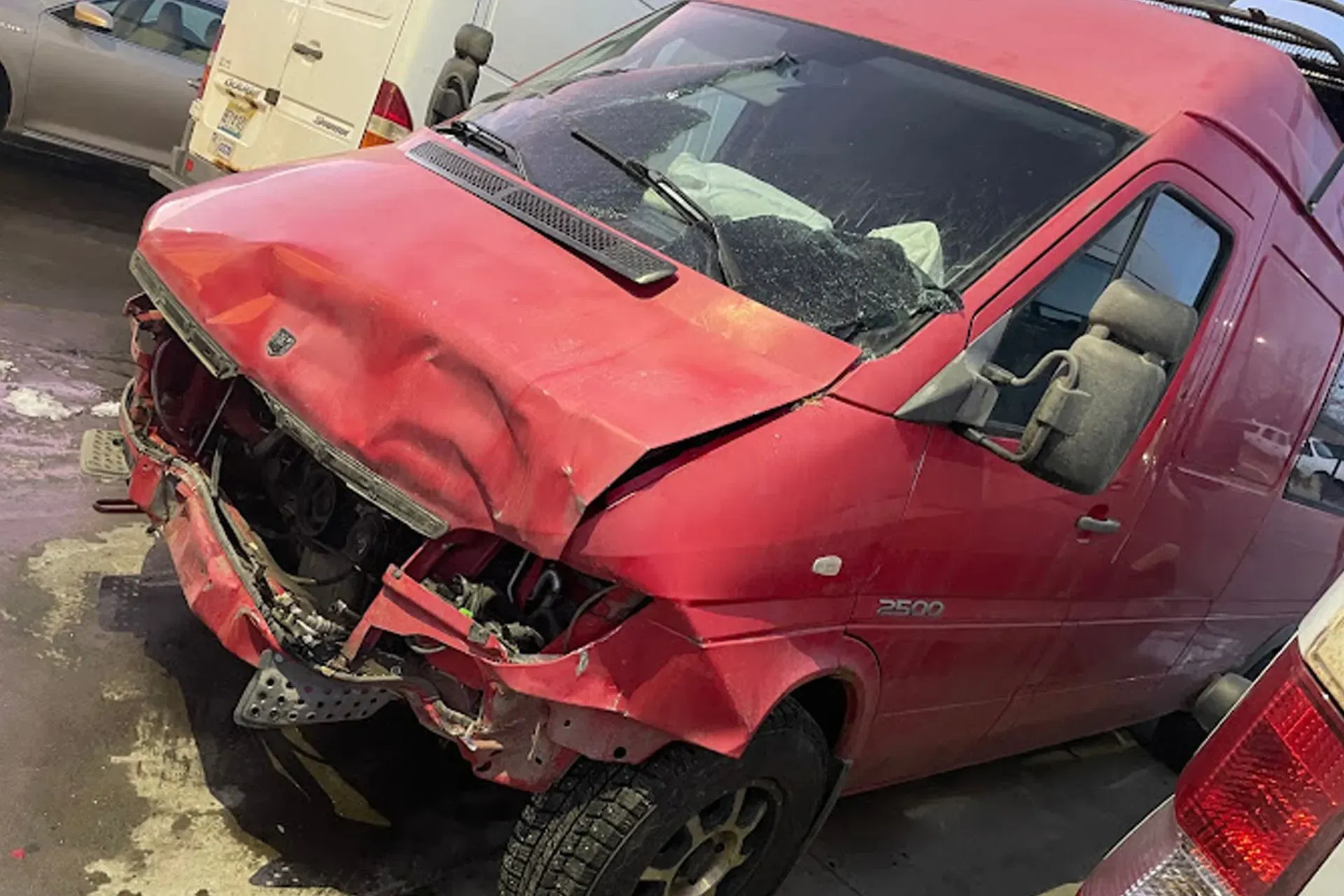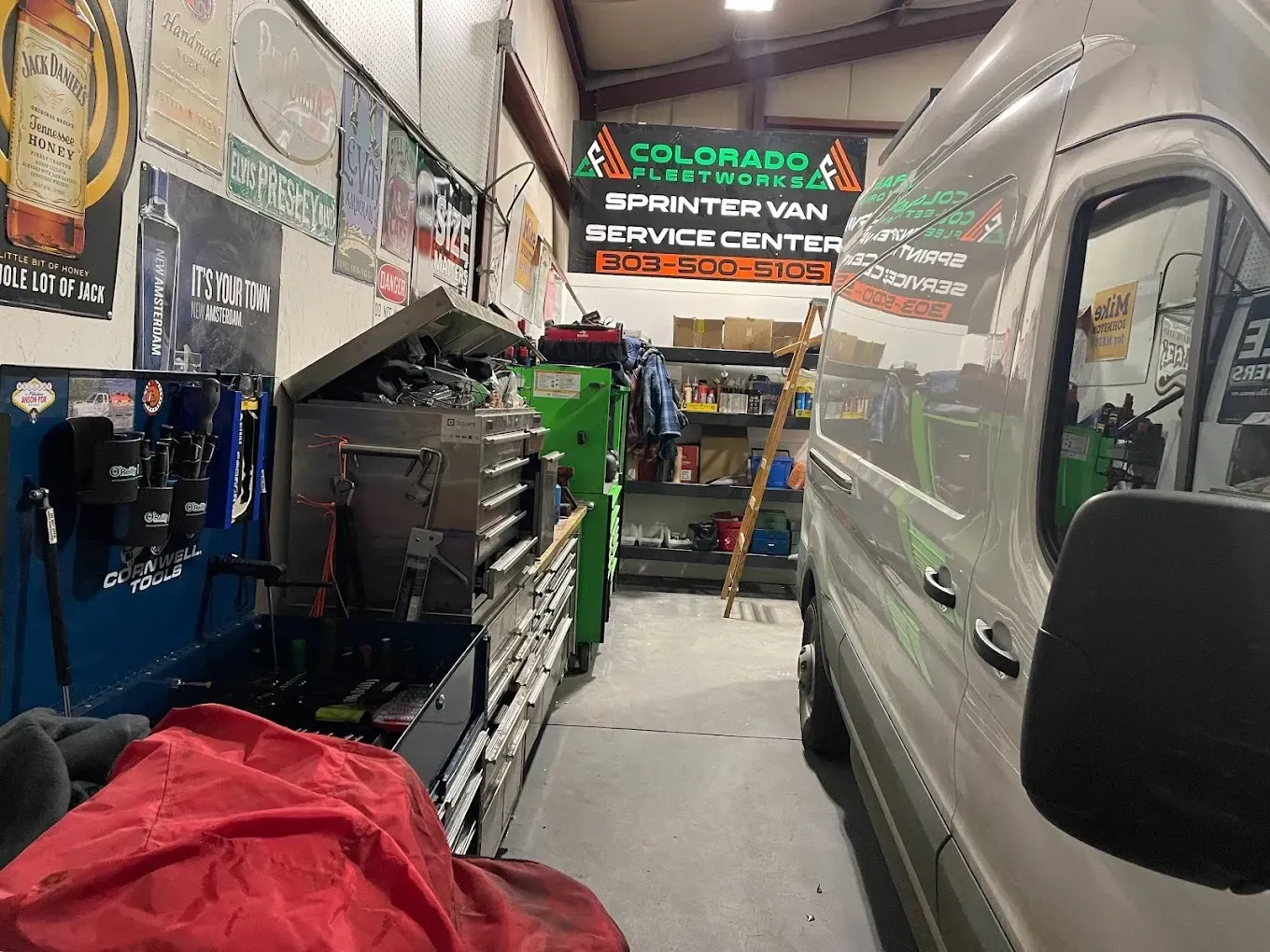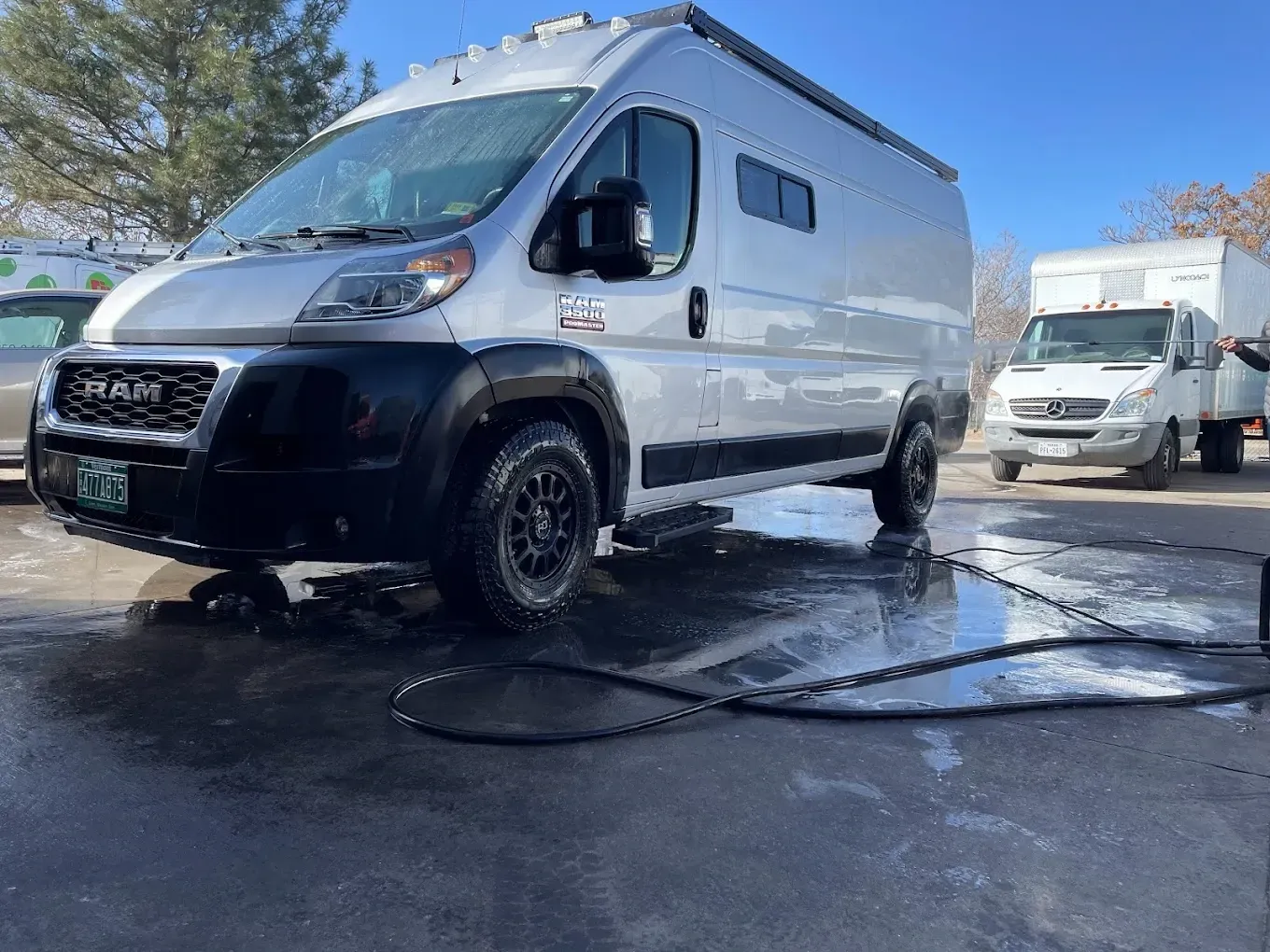How Often Should You Change the Oil in a Mercedes Sprinter Diesel?

Wondering how often you should change the oil in your Sprinter? If you drive a diesel MB Sprinter van, you already know it’s built to work hard. But like anything that runs long miles, it needs regular care to stay in good shape. One of the biggest maintenance items? Oil changes.
For most diesel Mercedes Sprinter diesels, it’s a good idea to change the oil and filter every 10,000 miles or once a year, whichever comes first. If you’re doing a lot of stop-and-go driving, towing heavy loads, or spending time in extreme temperatures, it’s smart to do it a little more often. Those kinds of conditions can wear the oil out faster, so staying on top of it can help avoid bigger problems down the road.
At Colorado Fleetworks, we service and repair Sprinter vans in our Denver shop to the tune of dozens every week. We’ve seen what happens when oil changes are done on time, and we’ve seen what happens when they’re not.
The Short Answer
For most Mercedes Sprinter diesel engines, the recommended oil change interval is about 10,000 miles or once a year, whichever comes first. That’s assuming you’re using the correct synthetic oil and OEM filters. If your Sprinter is part of a fleet, gets heavy daily use, or spends a lot of time idling, you might want to change it closer to every 7,500 miles to stay ahead of wear.
Why Oil Changes Matter More Than You Think
Sprinter diesel engines are tough, but they run hot and work hard. Over time, oil breaks down and collects gunk from combustion. If you push your oil past its limit, it can lead to things like sludge buildup, reduced fuel efficiency, or even early engine wear. Clean oil keeps everything moving the way it should and helps your engine last a lot longer.
Don’t Forget the Filter
We always recommend swapping out the oil filter with every change. Dirty filters can’t do their job, and keeping them fresh ensures that contaminants don’t cycle back through your engine. It’s a simple step that can prevent expensive problems later on.
Signs You Might Be Overdue
If you’ve gone too long between changes, you might notice sluggish performance, engine noise, or reduced fuel economy. Some Sprinters will even throw a warning light when it’s time. But you don’t need to wait for a signal. Regular oil service is cheap insurance compared to what engine repairs cost.
Book Your Oil Change with Sprinter Experts
We’ve been working on Sprinters in the Denver area since 2015. Whether it’s a routine oil change or a full inspection, we can help you get the most life out of your van. If it’s been a while or you’re not sure when your last service was, stop by and we’ll take care of it.
You keep the van moving. We’ll help keep it running right.











